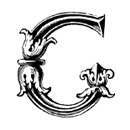
Ageing potential
The capacity for a wine to age is anything but an exact science thought great terroirs are often made to age, dependent on the quality of the vintage. Corney & Barrow gives a drinking window for new releases which, if conservative, advises customers when, at least, to try their wines and assess their drinkability.
Appellation
An appellation is a legally defined and protected geographical indication used to identify where the grapes for a wine are grown.
Allier
French region south of Sancerre famous for its oak.
Appellation Contrôlée
This is a guarantee of a wine's origin as decreed by national and regional authorities, based on strictly designated geographical zones allied to certain controls on traditional viti- and vini-cultural practices. The AOC system (Appellation d'Origine Contrôlée) relates to French law. Italian and Spanish equivalents are DOC (Denominazione di Origine Controllata) and DO (Denomenacion de Origen) respectively.
Argilo-calcaire
A French term to describe soils with a mixture of clay and limestone. This type of soil has a reputation for producing high quality wine.
Argentina
A wine growing country in South America.

Barrique
The Bordeaux name for the 225 litre barrels used for ageing their wines.
Bâtonnage
French term for ‘lees stirring’. Stirring the lees whilst the wine is in cask limits the extent to which wood tannins and colour are absorbed by the wine therefore the wines which undergo ‘Bâtonnage’ tend to be paler and less tannic than those that don’t.
Biodynamics
Transcending organic viticulture; biodynamic farmers plan their viticulture according to the rhythms of nature and the lunar cycle. They believe this accentuates the balance of the soil and therefore the vine. Read also our full article on Biodynamic wines.
Bond (in bond/under bond)
A price quoted in bond (or under bond) does not include duty and VAT, as the merchandise - in this instance the wine - is either being shipped or stored in a bonded warehouse.
Botrytis
A type of fungus and the name associated with an attack of Botrytis Cinerea. This is what causes rot. There is a beneficial botrytis, which affects ripe grapes and is responsible for the greatest sweet wines of the world (noble rot).
Broking Wine
The trading of fine wine.
Bud-rubbing
The removal of unwanted buds by hand from the canes and trunks of the vine to prevent over-cropping.
Budburst
The stage in the vine’s cycle when the shoots emerge from the bud.

Carbonic Maceration
Whole bunches of grapes go into the cuve, without crushing, blanketed with carbonic gas. Fermentation begins within the cells of the grapes. The resulting wine is fruity with very low tannin and can be drunk quickly; Beaujolais nouveau being a good example.
Chalk Soils
Soils with high chalk content are prized because of their excellent drainage and porosity, storing the water in the subsoil so that the vines have a constant source of moisture.
Claret
A term introduced by the British, describing red Bordeaux wine.
Clay
A heavy textured and cool soil type. To have a balanced and fertile soil structure a soil should contain a certain amount of clay.
Climat
A French term to describe a specific vineyard site, particularly relevant in Burgundy. Defined by its topography and climate.
Clone
Genetically identical vine stock, produced by multiplying vines by grafting or through vine cuttings from a parent vine. The plants are therefore genetically identical.Pros include plants being chosen for specific attributes such as resistance to disease or early ripening. On the minus side, plants tend to over-produce.
Continental climate
Used to describe the climate of an inland region far away from maritime influences. Here the temperature difference between winter and summer is considerable and whilst it is capable of producing wines of superb quality there are marked vintage variations.
Cool fermentation
Most white wines are fermented at low temperatures, helping to retain the freshness and fruit.
Coulure
French term for 'flower abortion' indicating a poor fruit set during flowering.
Cru
French term used for a vineyard that has been officially recognised as one of superior quality. Translated in English as 'Growth'.
Cuve
French term for a vat
Cuvée
Derived from the French word ‘Cuve’, this means ‘contents of a vat’. In reference to Champagne it refers to a blended batch of wines: a champagne house will blend together various different wines to make up their house-style ‘cuvée’.

De-stemming
Removing the stems from the grape bunches during crushing and prior to fermentation to prevent the harsh and bitter tannins from seeping into the wine.
Domaine
A vineyard that makes and bottles wine from its own grapes. The term is mostly used in Burgundy.
Downy Mildew
This is a cryptogamic disease caused by a fungus - Plasmopora Viticola. Downy mildew multiplies in warm and humid conditions. It causes light blotches on the leaves and destroys plant tissue. Treatment with a mix of copper and sulphur works well.
Duty Paid
This refers to the retail price on this website - meaning the price includes duty and VAT.

Elevage
This is the stage in winemaking between fermentation and bottling.
Exclusive Producers
Producers for whom Corney & Barrow act as sole importers to the UK.

Finca
An Argentine (wine) estate.
Free-run
Name given to the superior quality juice that runs from the freshly crushed grapes without the need for pressing.

Gravel
Type of soil particularly famous on the left bank of Bordeaux (from which the appellation, Graves, derives its name). The excellent drainage inflicts water stress on the vines, which is favourable for top quality wines.
Green harvesting
The trimming of unripe grapes to decrease crop yields. This improves the concentration of the remaining bunches.

Hacienda
A Spanish (wine) estate.
Hectare
1 hectare is equal to 10 000m² or 2.47 acres.

IGT
Indicazione Geografica Tipica - the second level of Italian wine classification, above Vino da Tavola and below Denominazione Origine Controllata (DOC).

Jeroboam
A bottle holding 3 litres, the equivalent of 4 standard sized wine bottles.

Kabinett
A wine designation in Germany and Austria

Lees
Sediment and yeast found in a barrel or tank during and after fermentation. Wine can be aged on the lees, giving increased complexity and aromas. ‘Sur Lie’ is the French term for a wine left on the lees.
Loam
A soil containing a mixture of clay, silt and sand that is best for the growth of most plants but is not necessarily ideal for viticulture, as it can encourage excessive growth (i.e. excessive vigour – see below). Strict vineyard management can curb growth.
Lutte raisonnée
A method of vineyard management whereby an understanding of the checks and balances of nature are taken into account, allowing for rational, controlled interventions and more environmentally sound ecosystems.

Magnum
2 bottles or 1.5 litres.
Malolactic fermentation
The bacterial conversion of the crisper, apple-type malic acid into the softer lactic acid in wine. This gives wines greater complexity and softer acidity.
Marginal climate
A climate where it can be difficult to get grapes to ripen – for example, Burgundy and Oregon – because the fruit barely has enough time to get ripe before winter sets in.
Marl
This is a crumbly combination of limestone and clay which may be added to deficient soils. Marl also occurs naturally in some French and German wine regions. The finest Côte d’Or wines are grown on marl.
Meso-climate
The unique climate of a subsection of a wine region, usually describing the climate of a particular vineyard, taking into account factors such as altitude, slope inclination, aspect or distance from large bodies of water.
Methuselah
8 bottles or 6 litres (Burgundy)
Mildew
There are two forms of mildew, downy mildew and powdery mildew - oidium. These are cryptogamic diseases caused by fungi - Plasmopora Viticola and Uncinula Necator respectively. Downy mildew multiplies in warm and humid conditions.It causes light blotches on the leaves and destroys plant tissue. Treatment with a mix of copper and sulphur works well. Oidium, powdery mildew, attacks both the leaves and the berries, evidenced by a powdery, grey growth, which covers the plants. Regular treatment with sulphur work well.
Monopole
A whole appellation or vineyard with a single owner.

Nebuchadnezzar
20 bottles or 15 litres (champagne)
New oak
Many white wines, especially those made from Chardonnay, are fermented in small oak barrels, giving the wine increased complexity and toasty, nutty flavours. It’s relatively rare for red wines to be fermented in new oak but they are often aged in them. Barrels allow a small amount of oxygen to come into contact with the wine, accelerating the development of more complex flavours and imparting from the oak the flavours of vanilla and spice.

Oidium
A microorganism and fungal disease, similar to mildew, which devastated the French wine industry in the mid-1800s.
Old vines
In French ‘Vieilles Vignes’. There is no legal definition but a wine made from ‘old vines’ usually refers to one made from vines over 30 years old. Older vines produce fewer grapes which are of higher quality than those from young vines.

Pigeage
In order to make wines with colour, reds or roses, the fermenting wine needs to be in contact with the skins of the grapes. When wine ferments, Carbon Dioxide pushes the skins to the top of the fermenting vessel. Pigeage is a French term for pushing the grape skins back down into the fermenting wine. Its English equivalent is ‘punching down the cap’.
Phylloxera
Phylloxera is a vine parasite - a louse which arrived in Europe from the US in the Nineteenth Century, in imported vines. A miniscule creature, first observed around 1860. Its spread devastated European viticulture. Phylloxera attacks the roots of vines, thereby cutting off their means for nutrition. Growths tend to develop which lead to rot. There was no cure but observers saw that US vines were resistant. These vines were not good for wine but could be, and are being, used for grafting European vines. Research continues into finding a natural predator but, to date, grafting continues.
Powdery Mildew
Also known as oidium, is a cryptogamic infection caused by a fungus, Uncinula Necator, which attacks both the leaves and the berries, evidenced by a powdery, grey growth, which covers the vines. Regular treatment with sulphur works well.
Premier Cru
The level of classification of a wine, beneath Grand Cru.
Phenolics
A large group of compounds found in grapes and wine, which are responsible for colour, tannin and flavour.

Quinta
A Portuguese (wine) estate.

Racking
The process of racking involves transfer of wine from one container, such as a barrel, to another. Carefully done, the lees may be left behind in the first barrel, resulting in a partial clarification of the wine.
Release (a wine)
To 'offer' a new wine the latest wines and vintages for sale.
Retail Price
The standard 'shelf price' which includes duty and VAT.
Riddling
The process of moving sediment to the neck of a sparkling wine for removal.

Saignée
This winemaking process involves bleeding off a portion of red wine after only a short period of contact of the juice with the grape skins. Because the colour of red wine is derived from pigments in the skins, the juice is only pink not red. This process is how rosé wine is made the only exception being Champagne where rosé cuvées may also be made by blending red and white wines.
Sur Lie
This term describes a wine that has been allowed to lie on its lees for some time before being racked off. The intention is to add extra richness and flavour to the wine.

Tannin
The group of astringent and bitter compounds found in the skins, pips and stems of grapes (and also in oak barrels), which slow oxidation and promote ageing. They are a vital component of red wines. Without tannins to support the fruit, most red wines would taste flabby and unbalanced.
Terroir
A French term which describes all the influences on the flavours in the wine that come from where the vines grow, especially soil, climate, slope and the aspect of the slope. There is no exact translation in English.

Ullage
The small amount of air in the bottle between the top of the wine and the cork. When purchasing older bottles, the ullage can be an indicator of the quality of the wine. A large ullage may suggest deterioration of the wine through oxidation.

Vendange Tardive
Literally translated as late or delayed harvest, this refers to wines made from grapes which are picked late, with typically higher sugar levels.
Vin de Pays
Literally meaning 'country wines', the often under-rated category of 'Vin de Pays' lies below Appellation d'Origine Contrôlée and above Vin de Table.
Vinification
Winemaking
Viticulture
Grape growing
Vigour
A term used to describe the growth rate of a particular vine. Large quantities of fruit lack intensity and fruit character. Strict vineyard management is essential to reduce crop.
Vigneron
French term for a vine-grower.

Winemaker
A winemaker or vintner is a person engaged in making wine


Yeast
A microorganism which feeds on the sugar in grape juice and produces alcohol and carbon dioxide as waste products. The selection of the appropriate yeast strain -- or indeed the decision simply to allow fermentation to occur with the wild strains of yeast that live on the grape skins -- is an important choice in winemaking.

Zymology
The science of studying the biochemical process of fermentation.

